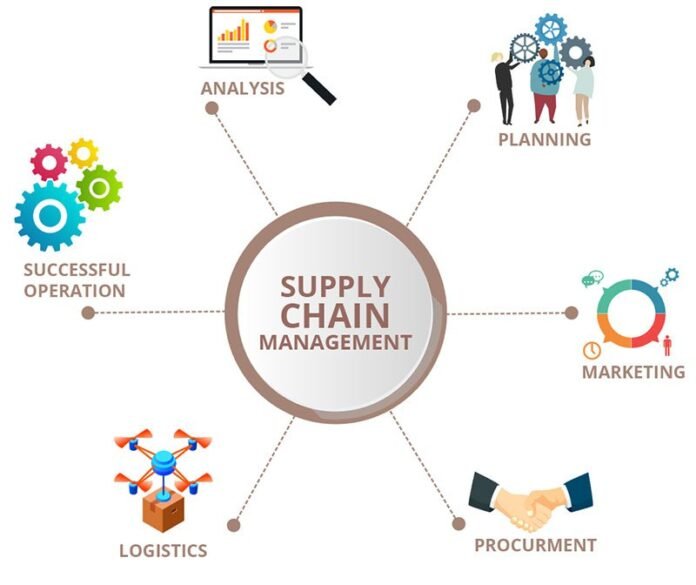Have you ever felt overwhelmed by the amount of work that goes into managing your supply chain? This article is here to help make it less stressful! It provides an overview of the warehouse management system, their advantages and disadvantages, and which ones you should use for your business.
What is Supply Management?
It is the process of planning, organizing and controlling the flow of materials and products to meet customer requirements. It includes forecasting demand, setting and monitoring production schedules, and coordinating inventory levels.
It is an important part of a company’s overall strategy because it helps ensure that products are available when customers need them and that costs are kept low.
A successful supply management program can help companies achieve several objectives. For example, it can help improve productivity by ensuring that workers are constantly working with the latest versions of software and hardware products. It can also reduce costs by reducing the amount of inventory that is required. And it can help companies protect their competitive edge by ensuring that they have the right supplies available when they need them.
Supply management is a complex process, but it can be managed effectively with the help of a well-organized system. In this guide, we will discuss the key elements of a successful supply management system and provide tips on how to set one up.
Goal of Supply Management
It is the process of ensuring that adequate, reliable and appropriate quantities of products and services are available to meet customer needs. Achieving supply management objectives can be difficult, but it’s essential to meeting customer expectations.
There are a number of factors that must be considered when managing supplies:
- The types and quantities of products that are produced
- The number and types of customers
- The geographical location of the production facilities
- The availability of raw materials and components
- The cost and availability of manufacturing resources
If you’re not able to keep up with demand, you could see a decrease in sales or even go out of business. Managing your suppliers correctly is one of the most important steps you can take to ensuring consistent quality and reliability for your products.
The Importance of Real Time Information
There is no denying the importance of real time information in supply management. In order to effectively plan, manage and monitor inventory levels, businesses need to have accurate information at their fingertips. Unfortunately, many businesses struggle with acquiring this type of information in a timely manner. That’s where supply chain management software comes into play.
These programs provide businesses with the ability to track inventory levels in real time. Making it easier to make decisions about what to buy and when to sell with inventory app. By providing this type of information, supply chain management software can help businesses reduce waste and improve efficiency.
If you’re looking for a way to improve your supply chain management skills, be sure to check out our list of the best supply chain management software programs.
How to Manage Supply?
If you’re looking to improve your business’ supply chain management capabilities, this guide is for you. In it, we’ll discuss everything from how to keep track of your inventory to how to optimize your procurement process. We’ll also cover some handy tips for handling disruptions and ensuring a smooth flow of goods. So if you’re ready to take your supply chain management to the next level, read on!
What are the Key Components of Supply Chain Management?
There are many different aspects to supply management, and it can be a complex process. But, in essence, It is the process of ensuring that adequate supplies of products and materials are available when needed, and that the costs associated with acquiring and supplying these resources are reasonable.
In order to effectively manage supplies, it’s important to understand the key components of this process. Here are four key ingredients:
- Inventory Management: In order to ensure that adequate supplies are available when needed, you need an accurate inventory of your products. This includes items that you own as well as those that you contract for. Tracking inventory levels can help keep costs down by ensuring that you’re not spending money on unnecessary supplies.
- Purchasing Strategies: When purchasing supplies, consider both the short- and long-term effects of your decisions. For example, buying in bulk may save you money on individual items, but it may also lead to increased waste if not properly stored or used. Additionally, make sure to factor in any special needs or requirements that your company might have when purchasing supplies.
- Distribution Planning: Supply chains are complicated and extensive, and managing them requires careful planning. Make sure you’re using the right supply chain management tools to ensure that your company’s inventory is properly maintained. 4. Inventory Management: Keeping track and monitoring inventory can help reduce waste and save money by ensuring that your company doesn’t over-order or under-order items.
Conclusion
In this article, we have provided a comprehensive guide to supply management, from planning your inventory to tracking and managing your supplier relationships. By following these tips, you can ensure that your business is able to procure the necessary supplies without any hiccups. Thank you for reading!

